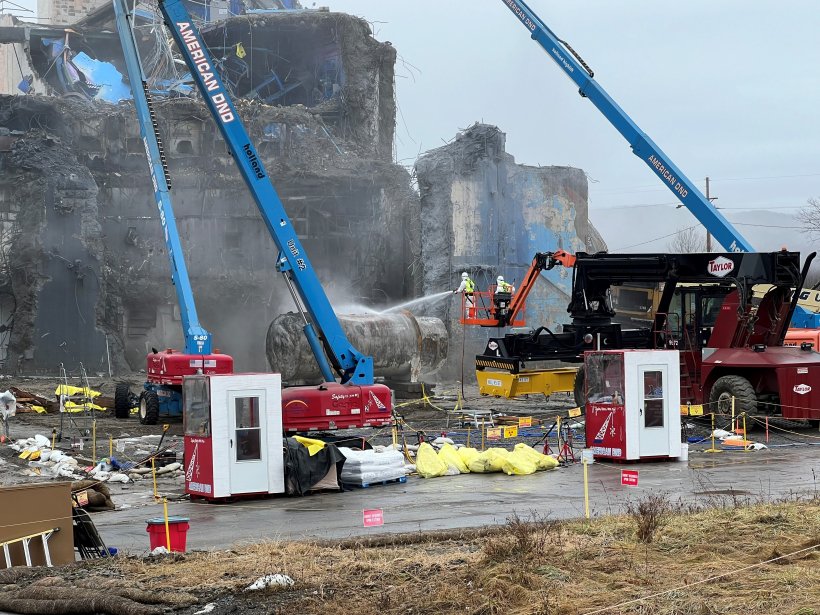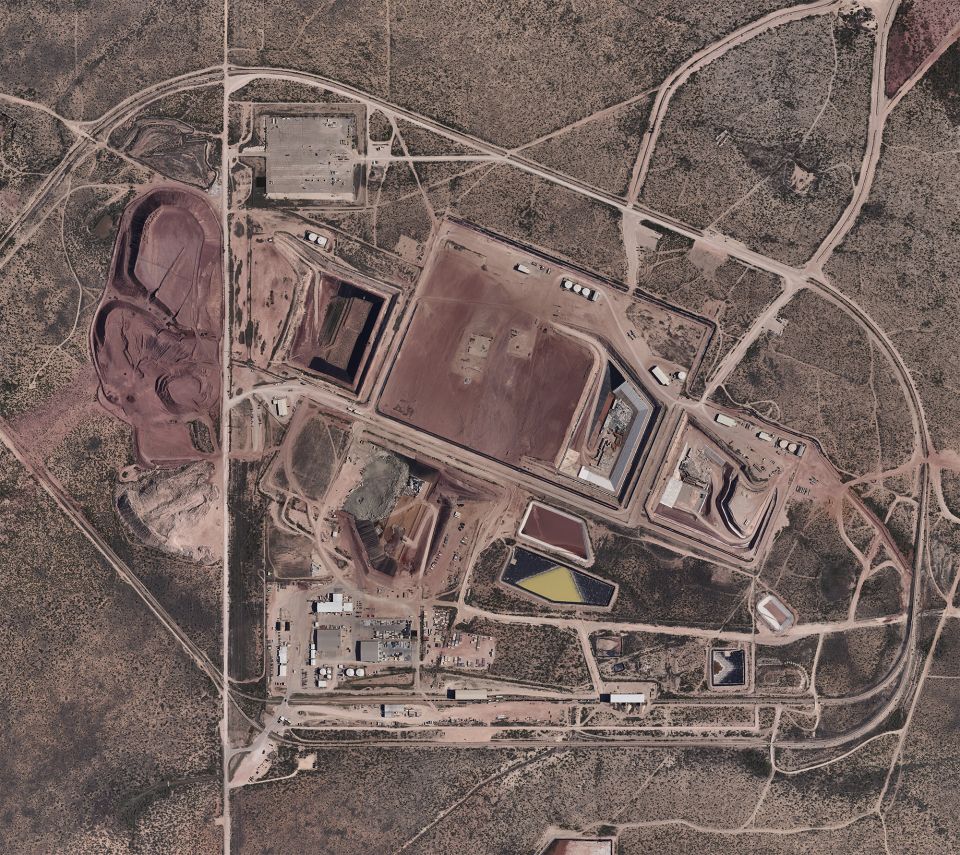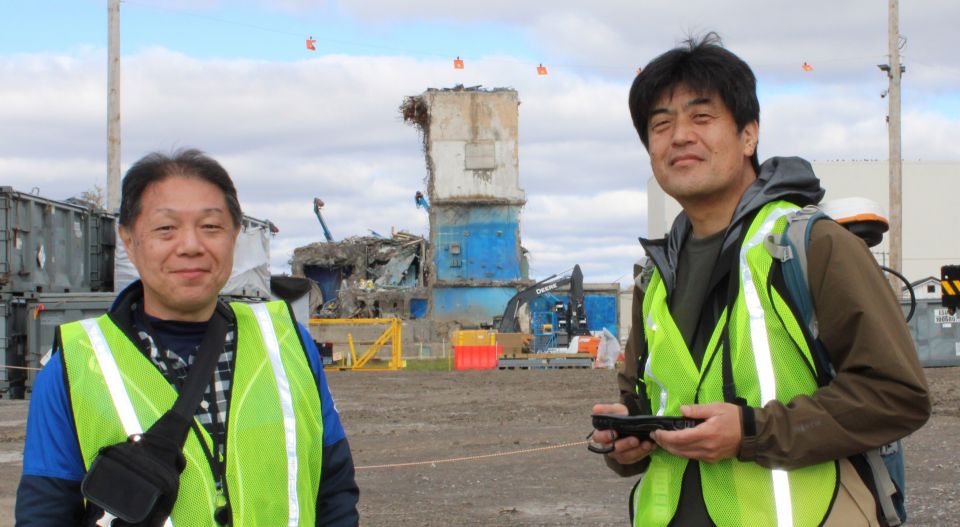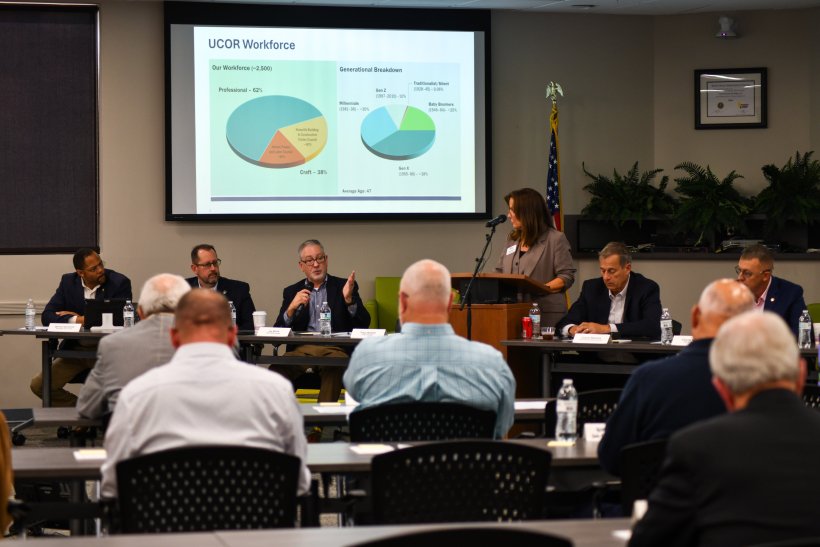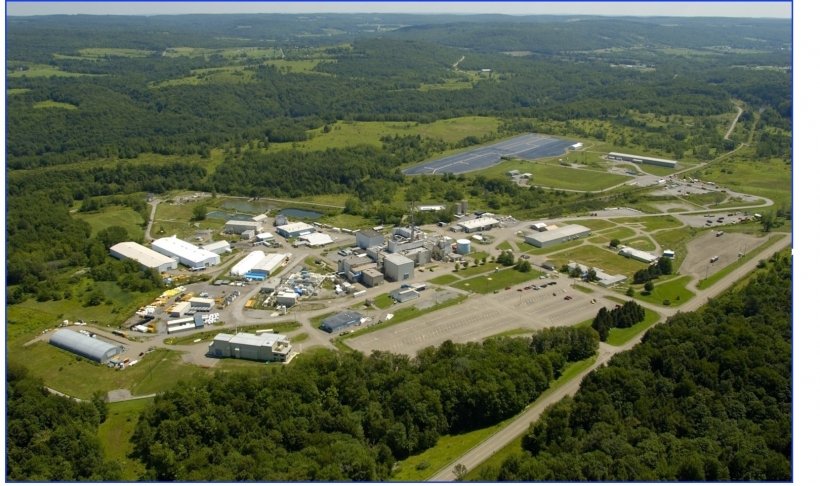Workers at the West Valley Demonstration Project prepare a large tank for loading after removing it from a liquid waste cell of the Main Plant Process Building. (Photo: DOE)
The Department of Energy’s Office of Environmental Management and its cleanup contractor at the West Valley Demonstration Project have removed the largest of nine tanks from a liquid waste cell as part of the ongoing demolition of the Main Plant Process Building, the office announced on February 6.
The tanks were used to collect liquid waste from past nuclear fuel reprocessing operations, and later, high-level radioactive waste vitrification processes.
A 20-ton tank: To extract the 40,000-pound tank, crews with CH2M HILL BWXT West Valley (CHBWV) used an excavator with a hydraulic hammer to remove concrete and steel that surrounded the tank. The tank served as the main waste collection tank where acidic liquids were neutralized before the waste liquid was transferred through the system. The team will remove the remaining eight tanks as part of the cleanup project.
Prior to the start of the work, all nine tanks were deactivated and stabilized with grout or foam to control any residual contamination at the source.
Plant demolition: The Main Plant Process Building is one of the last major facilities at DOE-EM’s West Valley cleanup site. Demolition of the building is expected to be completed in the next fiscal year, which starts in October.
According to DOE-EM, the successful demolition of the building will further reduce environmental risks and position the site for the next cleanup phase.
Last year, DOE-EM and CHBWV posted an animated YouTube video showing the planned steps in demolishing the Main Plant Process Building.
History: The West Valley Demonstration Project is an area of approximately 150-acres located 35 miles south of Buffalo, N.Y. The site is owned by the New York State Energy Research and Development Authority and is home to the only commercial spent nuclear fuel reprocessing facility to have operated in the United States.
From 1963 to 1972, the site processed 640 metric tons of spent nuclear fuel and generated more than 600,000 gallons of liquid high-level waste. In 1980, Congress passed the West Valley Demonstration Project Act, which required the DOE to conduct a high-level waste management demonstration project at the site and transport it to a federal repository for disposal.
